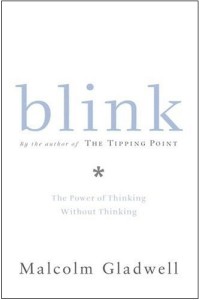by Malcolm Gladwell
Published by Little, Brown and Company, 2005, 288 pp.
There is a risk that this book could be taken as just another pop-psychology fad. That would be a serious error. All of us have had the sense that we knew the right answer to a complex problem as soon as we were faced with it. Gladwell takes that thought and provides scientific and common-sense insight as to why and how we can make snap decisions with confidence. This book is not, however, simply a scientific review of a psychological approach to problem solving. It is an intelligent and engaging series of stories that keep the reader captivated. Going into this book one might think it will be stuffy. However, Gladwell’s style and assembly of information makes this closer to a mystery that needs to be solved than a scientific summary. He has written a true page-turner.
The book also has some warnings, especially for those in positions to make critical decisions. The lead story, presented in the introduction, shows how an aggressive institution seeking to make a name for itself fell into a trap of believing what they wanted to believe. The so-called experts supported conventional wisdom which was probably not so wise. Experienced observers who were not consulted for their expertise, provided a dissenting view. The result was that the Getty Museum paid $100 million for a statue that it was compelled to date at “about 530 B.C., or modern forgery”.
In the business world, sometimes there are those in power who got there by – what Gladwell calls – the Warren Harding Error. This phenomenon is manifested by raising up those whom we look up to; tall men (and, yes, it’s often men) who have an air of distinction are elevated to leadership roles. This is often how presidents are elected, including Warren Harding. Everyone in business has witnessed this phenomenon. Of course, there are some exceptional examples of great business leaders – Jack Welch and Lou Gerstner come to mind – who were not large in stature. However, there are many with whom we come in contact that have more height than brains. We’ve all seen it and know individuals who qualify.
Other examples in this book present us with how decisions are made in war settings, how marketing the “right” idea to the right audience can be elusive, how assumptions and interpretation of people’s thinking can result in a tragic response or brilliant insight. Anyone who wants to think smarter should read this book. Anyone who wants to gain insight into how people react to each other (that is also to say, how others react to each of us) should read this book. Anyone involved in critical decisions – from waging war to determining compatibility in marriage – should read this book. It is as easy to recommend this book as it is to read it; in fact, recommending it is made easy by its ease of reading.
